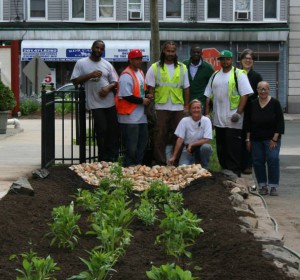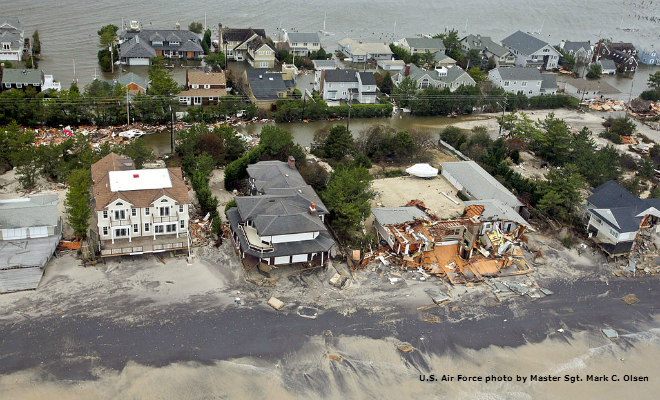New Jersey Future Blog
Incorporating Green Infrastructure: The Time Is Now
May 13th, 2015 by New Jersey Future staff
Green infrastructure is a major part of New Jersey Future’s Urban Water Infrastructure initiative. Since we couldn’t attend the session at the American Planning Association’s 2015 conference on Green Infrastructure Zoning, and since AJ Fawver AICP, the planning and development administrator for the city of San Angelo, Texas, was doing such an excellent job livetweeting it, we asked her to expand her tweets into an article.
The idea of green infrastructure as a tool for stormwater management is catching on around the country. The 2015 American Planning Association conference featured a session on Green Infrastructure Zoning, focused on raising awareness of the impact local regulations have on the facilitation of green infrastructure. The presentations — by Juli Beth Hinds AICP, principal at Birchline Planning in San Diego, and Tracy Tackett PE, the green stormwater infrastructure program manager for Seattle Public Utilities — included innovative strategies for promoting this sustainable approach and overcoming barriers to its implementation.
The local regulatory barriers that need to be overcome fall into two categories: “language” and “people.” Engineers and planners use different terms and are often accused of “speaking different languages.” Engineers are best acquainted with the relevant issues; however, planners — who often manage the site requirements — are an essential part of the stormwater management equation. Achieving consistency in the wording of adopted regulations is an important long-term consideration, as the interpretation in application must meet the needs of both groups. “People” barriers can include a lack of technical knowledge, changing habits, and a fear of maintenance.
Each can be overcome with four steps highlighted in the session. First, identify the “language” and “people” barriers in your community. Then draft new or amended language and standards. Next, work with engineers, utilities, arborists, manufacturers and landscape architects on technical issues. Lastly, be a good steward and refrain from doing counter-productive things.
Site planning can affect stormwater quality in a variety of ways. There are many opportunities for mitigating the impacts large swaths of asphalt create for runoff, including surfacing requirements for roads, paths, sidewalks, and parking, and parking reduction strategies such as off-site, shared, and compact parking. To reduce debris and bacteria in runoff, ensure proper siting and grading of dumpster enclosures or loading areas. Buffers should be used instead of setbacks from streams or wetlands, in order to supply the protection necessary for these features. EPA standards (Ed. note: In New Jersey’s case, state Department of Environmental Protection standards) and permits for Municipal Separate Storm Sewer Systems (or MS4s) provide additional support for revisiting these requirements and implementing innovative solutions.
Two excellent examples of innovative code updates to regulations include the Menomonee, Wisconsin, Watershed Codes and Ordinances Project and Seattle’s development of the Green Stormwater Infrastructure Project Manual. Some simple but powerful code changes made as part of these endeavors include the incorporation of bioretention into landscaping requirements instead of berms and evergreens. Bioretention elements were also incorporated into screening options that hide unsightly elements, such as HVAC units or trash or storage containers, from public view; they were used to beautify parking islands; and they were added to an updated Right-of-Way Improvement Manual. Specifications were developed for bioretention soil and permeable concrete. Setting a maximum number of drive-through lanes for businesses and allowing permeable surfacing in alleys where deemed acceptable were other minor code changes that will have dramatic impacts.
One thing participants lamented was the lack of a national manual for vehicular and pedestrian safety design that incorporates green infrastructure and mitigation tools, leaving states and municipalities to develop these on their own. Even so, as the session demonstrated, by combining the twin stormwater goals of volume reduction and quality improvement, cities and regions can have a sizeable positive impact in a variety of ways. The time is now for improved standards, and the number of resources available to any agency continues to grow.


















